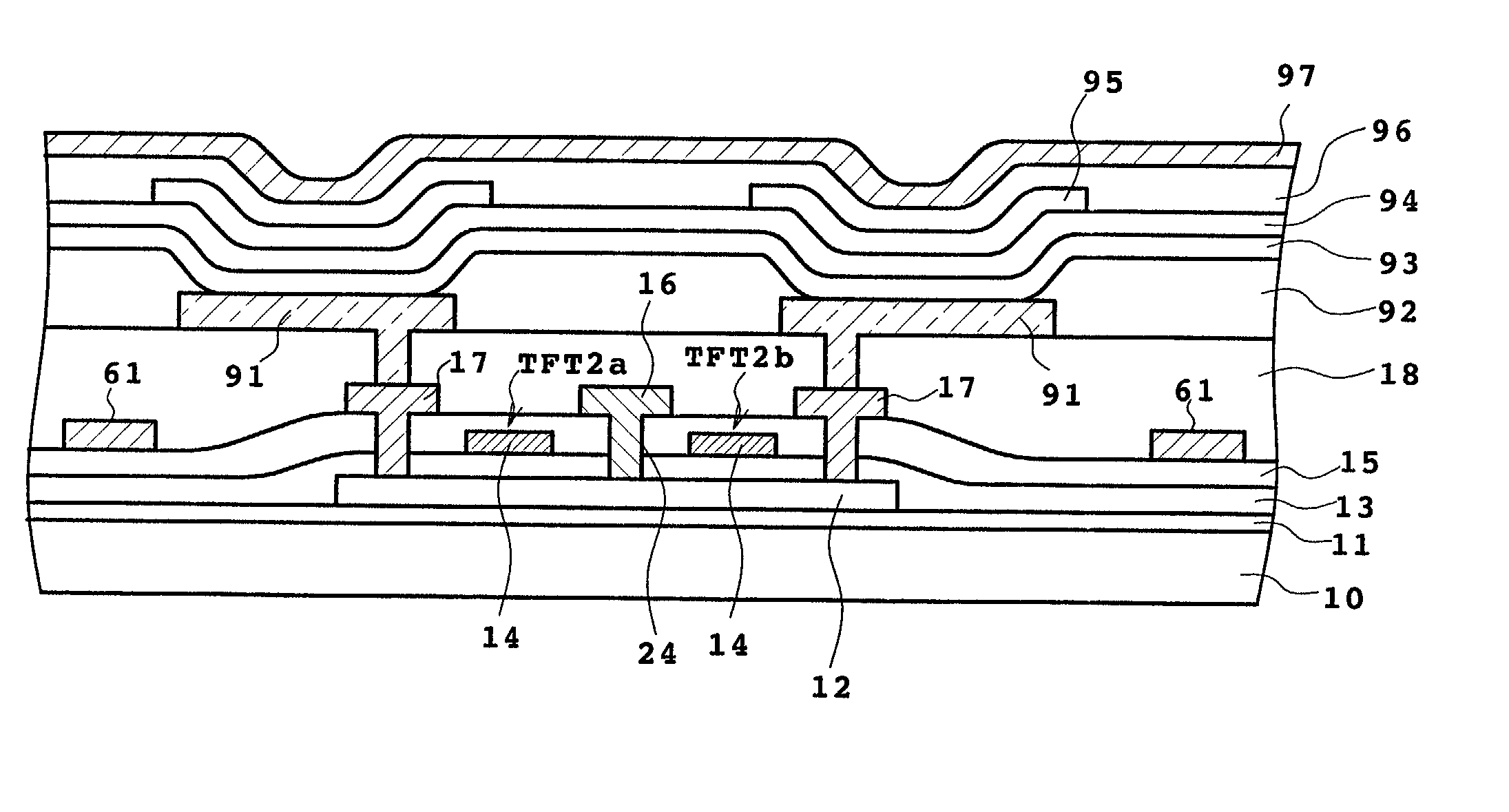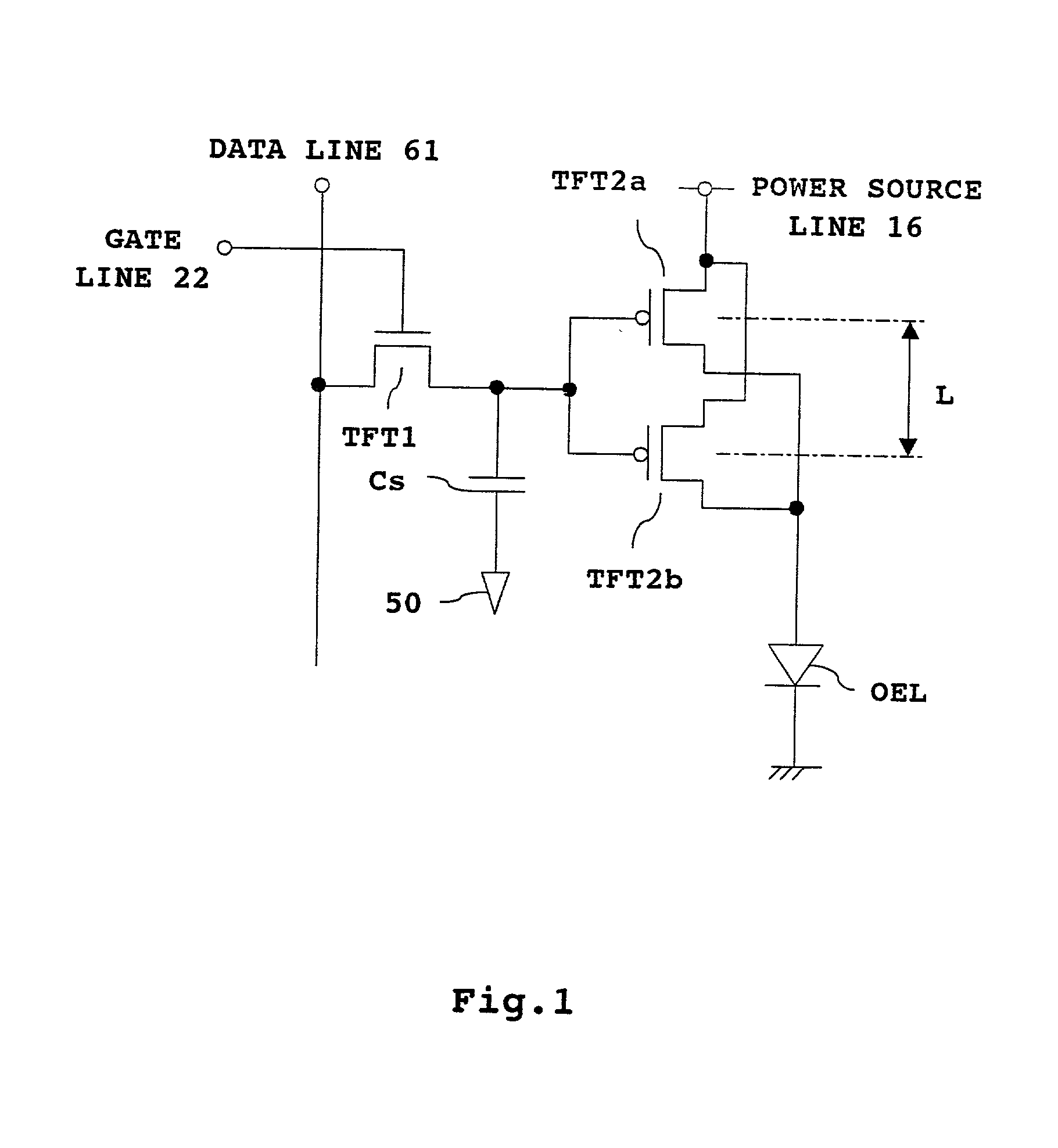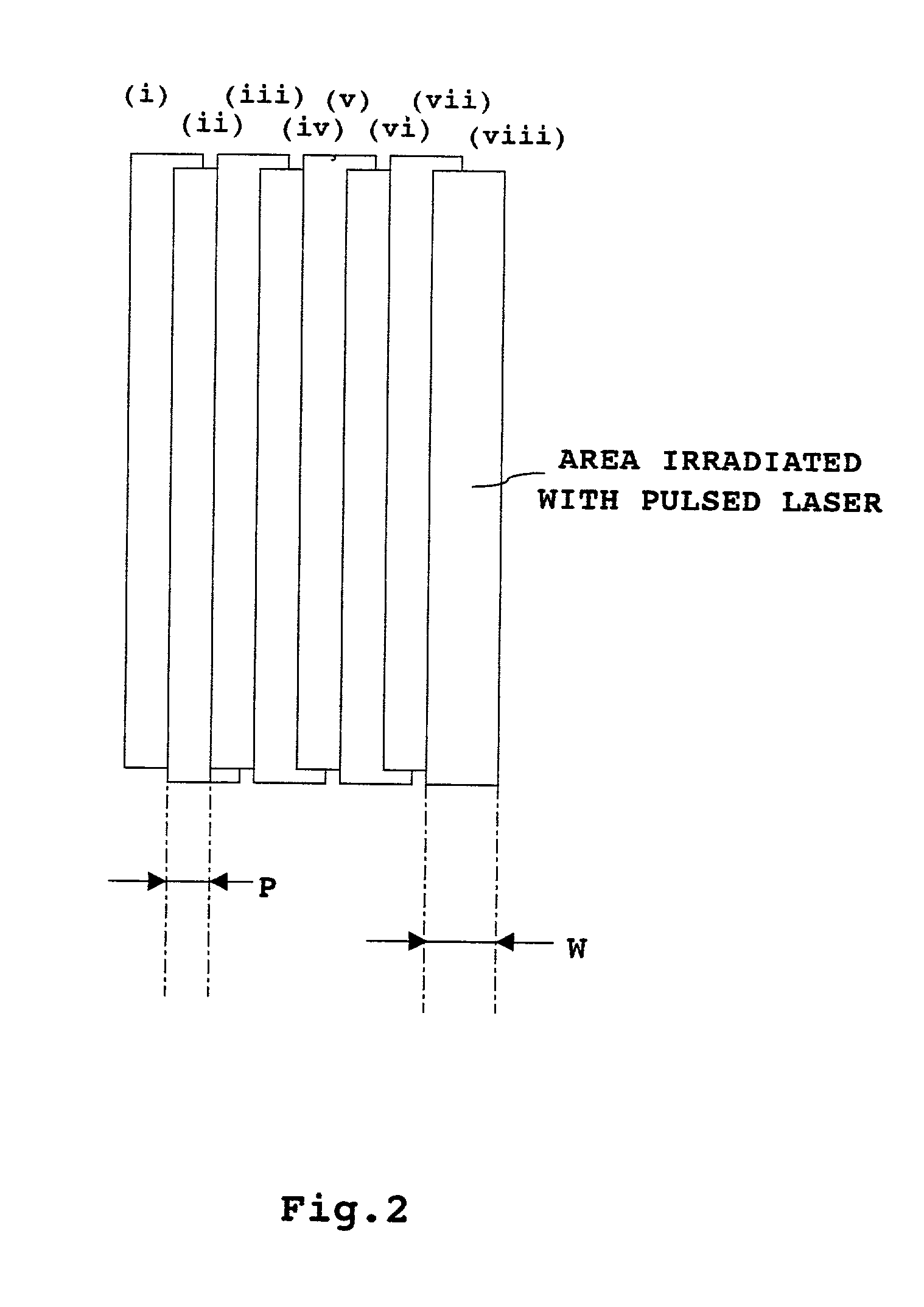Semiconductor device having thin film transistor for supplying current to driven element
a technology of semiconductor devices and transistors, applied in semiconductor devices, solid-state devices, transistors, etc., can solve problems such as pixel luminance variations, and achieve the effect of avoiding problems in thin film transistors
- Summary
- Abstract
- Description
- Claims
- Application Information
AI Technical Summary
Benefits of technology
Problems solved by technology
Method used
Image
Examples
first embodiment
[0031] [First Embodiment]
[0032] FIG. 1 shows a circuit configuration for each pixel of an organic EL display panel of an active matrix type. For a single pixel, an organic EL element OEL, a thin film transistor TFT1 for switching, TFTs for driving elements (TFT2a and TFT2b), and a storage capacitor Cs are provided. The N-channel thin film transistor TFT1 has a gate connected to a gate line (selection line) 22, a drain connected to a data line 61, and a source connected to gates of the two P-channel thin film transistors TFT2a and TFT2b connected in parallel. The thin film transistors TFT2a and TFT2b each have a source connected to a power source line 16, and a drain connected in common to the organic EL element OEL whose other end is connected to a constant potential (Vcom). The gates of the thin film transistors TFT2a and TFT2b are connected to the storage capacitor Cs whose other end is connected to a power source 50.
[0033] When a signal at a level sufficient to turn on the N-chan...
second embodiment
[0055] [Second Embodiment]
[0056] Next, another exemplary pixel configuration will be described as a second embodiment of the present invention with reference to FIG. 6. The elements corresponding to those described above are labeled with the same numerals and characters. Mainly the layouts of the transistors TFT1 and TFT2, the storage capacitor Cs, and the organic EL element 60 for each pixel differ from those in the first embodiment, and the cross sectional structures of the respective circuit elements are the same as those described above and as shown in FIG. 5.
[0057] In the example of FIG. 6, the laser used for annealing is set to scan in the column direction of the figure (the direction in which the data line 61 extends), and the thin film transistor TFT2 supplying an electric current from the power source line 16 to the organic EL element 60 for driving is disposed such that the channel (12c) length direction runs substantially parallel to the scanning direction of the annealin...
PUM
 Login to View More
Login to View More Abstract
Description
Claims
Application Information
 Login to View More
Login to View More - R&D
- Intellectual Property
- Life Sciences
- Materials
- Tech Scout
- Unparalleled Data Quality
- Higher Quality Content
- 60% Fewer Hallucinations
Browse by: Latest US Patents, China's latest patents, Technical Efficacy Thesaurus, Application Domain, Technology Topic, Popular Technical Reports.
© 2025 PatSnap. All rights reserved.Legal|Privacy policy|Modern Slavery Act Transparency Statement|Sitemap|About US| Contact US: help@patsnap.com



